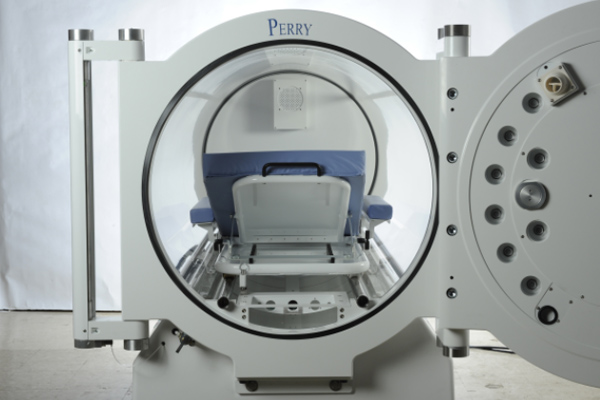Unlock the Power of Hyperbaric Oxygen Therapy for Faster Healing
Hyperbaric Oxygen Therapy (HBOT) has arised as a pivotal strategy in the world of recovery, supplying a special mechanism to improve healing through elevated oxygen levels. As numerous medical problems benefit from HBOT, understanding its specific applications and the science behind its effectiveness is essential.
What Is Hyperbaric Oxygen Treatment?
Hyperbaric Oxygen Treatment (HBOT) is a clinical therapy that entails making use of a pressurized chamber to supply pure oxygen to patients. This therapy operates the concept that raising ambient stress allows the lungs to soak up more oxygen than under typical atmospheric problems. hyperbaric oxygen therapy. Therefore, the enhanced oxygen degrees in the blood stream can substantially enhance the body's all-natural healing processes
HBOT is carried out in specialized chambers, which can accommodate one or more people and are typically readied to stress varying from 1.5 to 3 times that of normal air. Throughout a session, patients breathe 100% oxygen while the pressure is raised, leading to the dissolution of oxygen in physical liquids, consisting of plasma, lymph, and cerebrospinal fluid. This process not only improves oxygen delivery to damaged cells however additionally facilitates different biochemical reactions important for recovery.
While HBOT is commonly recognized for treating conditions such as decompression sickness and carbon monoxide poisoning, it has also acquired focus for its possible applications in various other medical areas. The therapy is typically well-tolerated, although it is essential for clients to be examined for any kind of contraindications prior to treatment.
Exactly How HBOT Improves Recuperation
The increased oxygen degrees attained during Hyperbaric Oxygen Therapy (HBOT) play a considerable duty in improving the body's healing processes. By delivering pure oxygen at elevated stress, HBOT promotes the diffusion of oxygen right into cells, advertising cellular metabolism and energy production. This enhanced oxygen availability sustains the synthesis of adenosine triphosphate (ATP), the power currency of cells, which is critical for fixing and regrowth.
Moreover, HBOT stimulates angiogenesis, the development of brand-new blood vessels, which is essential for providing nutrients and oxygen to hurt tissues. This process not just speeds up healing but likewise decreases the danger of chronic wounds and infections. Boosted oxygenation also helps in the removal of toxins and inflammatory conciliators, adding to a much more efficient recuperation setting.

Benefits of Hyperbaric Oxygen Therapy
Individuals undertaking Hyperbaric Oxygen Treatment (HBOT) often experience a variety of benefits that extend beyond enhanced recuperation times. Among the key benefits of HBOT is original site its capability to improve oxygen distribution to cells. By raising oxygen concentration in the blood, HBOT advertises mobile metabolism and urges the fixing of broken cells.
Additionally, HBOT has actually been shown to lower inflammation, which can alleviate pain and enhance general recovery. This anti-inflammatory impact can be particularly useful for individuals recovering from surgical procedure, injuries, or chronic problems. The treatment stimulates the development of new blood vessels, a process understood as angiogenesis, which is critical for supplying nutrients to recovery tissues.
An additional substantial advantage is the possibility for enhanced immune function. By boosting the body's oxygen levels, HBOT can reinforce immune feedbacks, aiding patients repel infections throughout recovery. Moreover, many clients report increased power levels and minimized tiredness adhering to treatment, adding to an overall sense of well-being.
Conditions Treated With HBOT
Numerous clinical conditions can profit from Hyperbaric Oxygen Treatment (HBOT), making it a flexible treatment alternative in numerous medical care settings. HBOT is largely acknowledged for its performance in treating decompression illness, a condition typically experienced by scuba divers. Furthermore, it plays a crucial duty in advertising the recovery of persistent injuries, particularly diabetic person foot abscess, by boosting oxygen distribution to compromised tissues.
Various additional resources other problems that might be treated with HBOT consist of radiation injuries, where it assists in cells Read Full Article recuperation after radiation treatment. It is also helpful for carbon monoxide gas poisoning, as it aids displace carbon monoxide gas from hemoglobin, bring back typical oxygen levels in the blood. HBOT is utilized in cases of thermal burns, enhancing the recovery procedure and minimizing the danger of infection.
Patients struggling with osteomyelitis, an infection of the bone, may also experience boosted results with HBOT, as it helps to increase oxygen supply to contaminated cells. Specific neurological conditions, such as stressful brain injury and stroke, are being explored for HBOT's possible neuroprotective results - hyperbaric oxygen therapy. Overall, the varied applications of HBOT highlight its significance in modern-day medicine
What to Anticipate Throughout Therapy
Following the expedition of various problems treated with Hyperbaric Oxygen Therapy (HBOT), recognizing what to anticipate during therapy is important for people considering this therapy. The therapy normally happens in a specialized chamber, which can accommodate one or numerous patients. Throughout the session, the chamber is gradually pressurized, enabling the patient to take a breath in pure oxygen at degrees higher than climatic pressure.
Individuals can expect to go through a number of sessions, each lasting roughly 60 to 90 minutes. There might be a sensation of fullness in the ears, comparable to what one experiences throughout altitude modifications, yet this usually solves quickly with easy equalization methods.
The therapeutic environment is checked by trained professionals who make sure safety and convenience. Patients are encouraged to unwind, as they may check out or pay attention to music throughout the treatment. While the majority of people tolerate HBOT well, some may experience mild adverse effects such as tiredness or short-lived visual changes.
Ultimately, comprehending these elements can assist alleviate any stress and anxieties and prepare individuals for a valuable recovery experience through HBOT.
Conclusion
